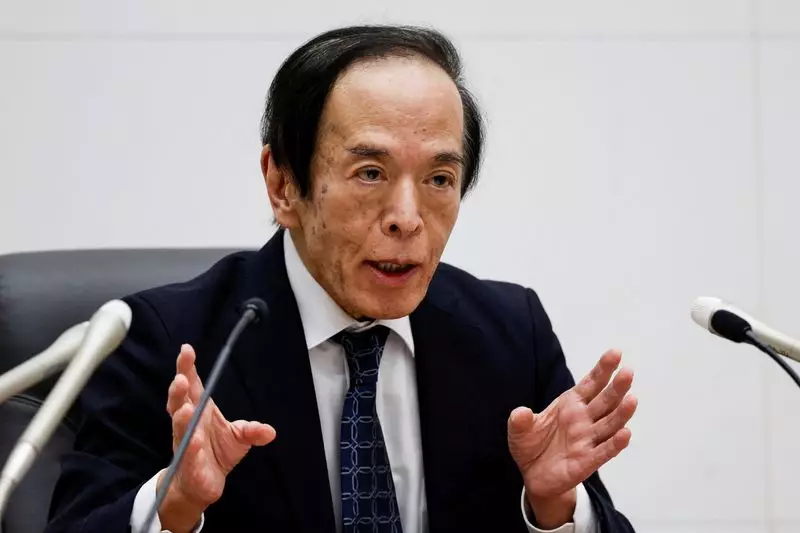As the Bank of Japan (BOJ) approaches its biennial policy meeting, there is a palpable tension in the market regarding its potential decisions. This article delves into the implications of the BOJ’s monetary policy adjustments, the economic landscape, and the interactions with external factors such as U.S. presidential policies.
The BOJ is holding its first monetary policy meeting of the year on a timeline that coincides with the inauguration of the new U.S. President. This synchronization is crucial as markets often respond violently to shifts in central bank policies, especially when they occur in tandem with geopolitical changes. The meeting, a two-day affair, will allow BOJ policymakers to evaluate recent economic performance and assess the domestic response to global economic trends.
During the last policy shift in July, the BOJ incrementally raised its short-term interest rate to 0.25%, breaking away from a prolonged state of negative interest rates. This movement suggested a cautious optimism toward the economic recovery following years of stagnation. Analysts and investors will be watching closely to see if the BOJ continues on this path, especially given the accumulated evidence in favor of further rate hikes.
The contours of Japan’s economy seem to favor an interest rate increase. Economic data indicate moderate GDP growth and inflation rates consistently above the previously established target of 2%. But what stands at the forefront of the BOJ’s deliberations this month is the robust uptick in wages. The forthcoming wage negotiations have signaled that employers are likely to provide increased compensation for employees, a critical indicator for a potential rate increase.
Historically, wage growth has been considered a linchpin for Japan’s economic revival, especially after decades of deflationary pressures. The BOJ reports from regional managers indicate that pay hikes are permeating various sectors, effectively creating an encouraging environment for policymakers. If the BOJ levies another interest rise, it would likely set the short-term target at 0.5%, signaling intent to further stimulate economic activity by opening pathways for increased consumer spending.
Challenges to Policy Decision-Making
Nevertheless, striking a balance in monetary policy is seldom straightforward. The specter of external uncertainties looms large over the BOJ’s considerations. In particular, the policies of U.S. President Trump could wield considerable influence over global markets, including Japan’s. There is concern that unceremonious decisions from the U.S., especially regarding tariffs or trade agreements, could elicit volatility that the BOJ might prefer to avoid.
BOJ Deputy Governor Ryozo Himino has mentioned the importance of closely monitoring global market conditions, providing insight into how deeply U.S. politics might affect Japan’s economic stability. This apprehension indicates that while there is optimism regarding salary growth and ongoing inflation, the BOJ may still hesitate to initiate a rate hike prematurely.
Should the BOJ decide to increase interest rates, market responses will likely be immediate and significant. In the wake of a rate hike, a short-lived rise in the yen could occur, particularly if BOJ Governor Kazuo Ueda issues statements favoring a hawkish stance. However, any gains could be ephemeral unless paired with a strong commitment to sustained policy normalization.
Furthermore, shifts in the U.S. Federal Reserve’s approach to interest rates will also play a pivotal role. A decrease in the likelihood of further rate cuts in the U.S. could highlight the divergence between U.S. and Japanese monetary policies, leaving the yen under pressure in the long term if higher rates are not sustained or followed-up by clear guidance from the BOJ.
As stakeholders look beyond the immediate outcomes of the BOJ’s upcoming meeting, several factors will play a role in shaping future monetary policy. Economic analyses suggest that gradual rate increases could become the norm, with BOJ potentially opting for a staggered approach, raising rates roughly twice a year.
Political uncertainties within Japan, notably the impending upper house elections, could further complicate the BOJ’s timing and decisiveness. If domestic tensions rise, policymakers may prefer to maintain the status quo until the political landscape becomes clearer.
While positive economic indicators support the case for interest rate hikes, the interplay of global uncertainties, particularly from the U.S., poses significant challenges that the BOJ must navigate. Stakeholders await the outcome of the BOJ meeting with a mixture of hope and caution, aware that the decisions made will reverberate across both domestic and global marketplaces.

